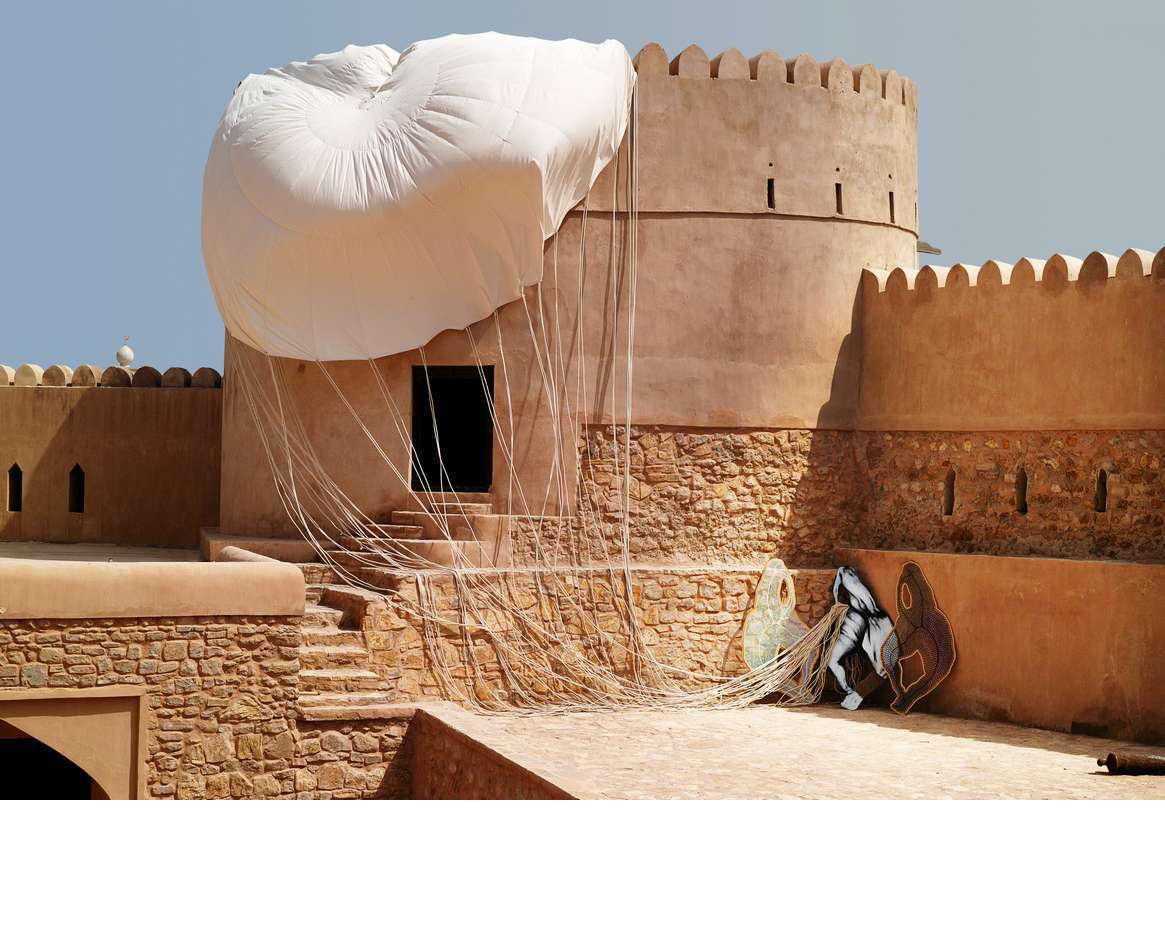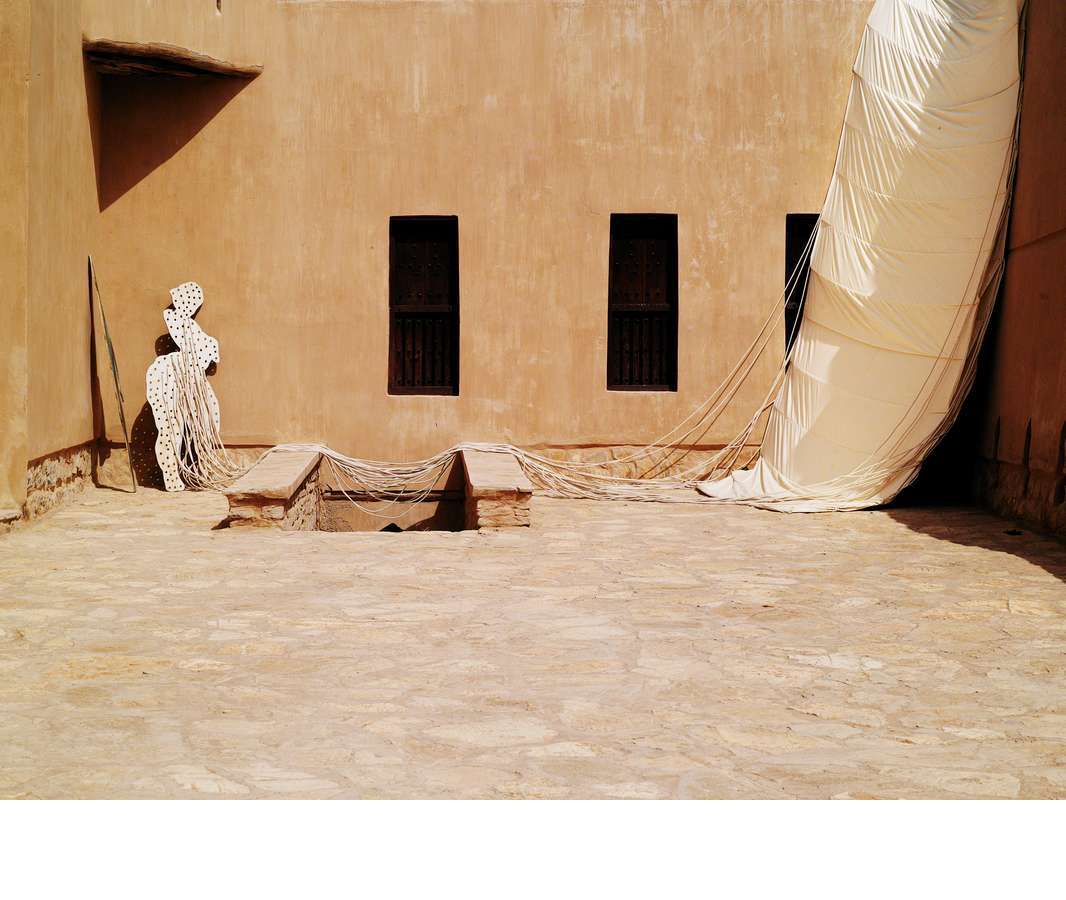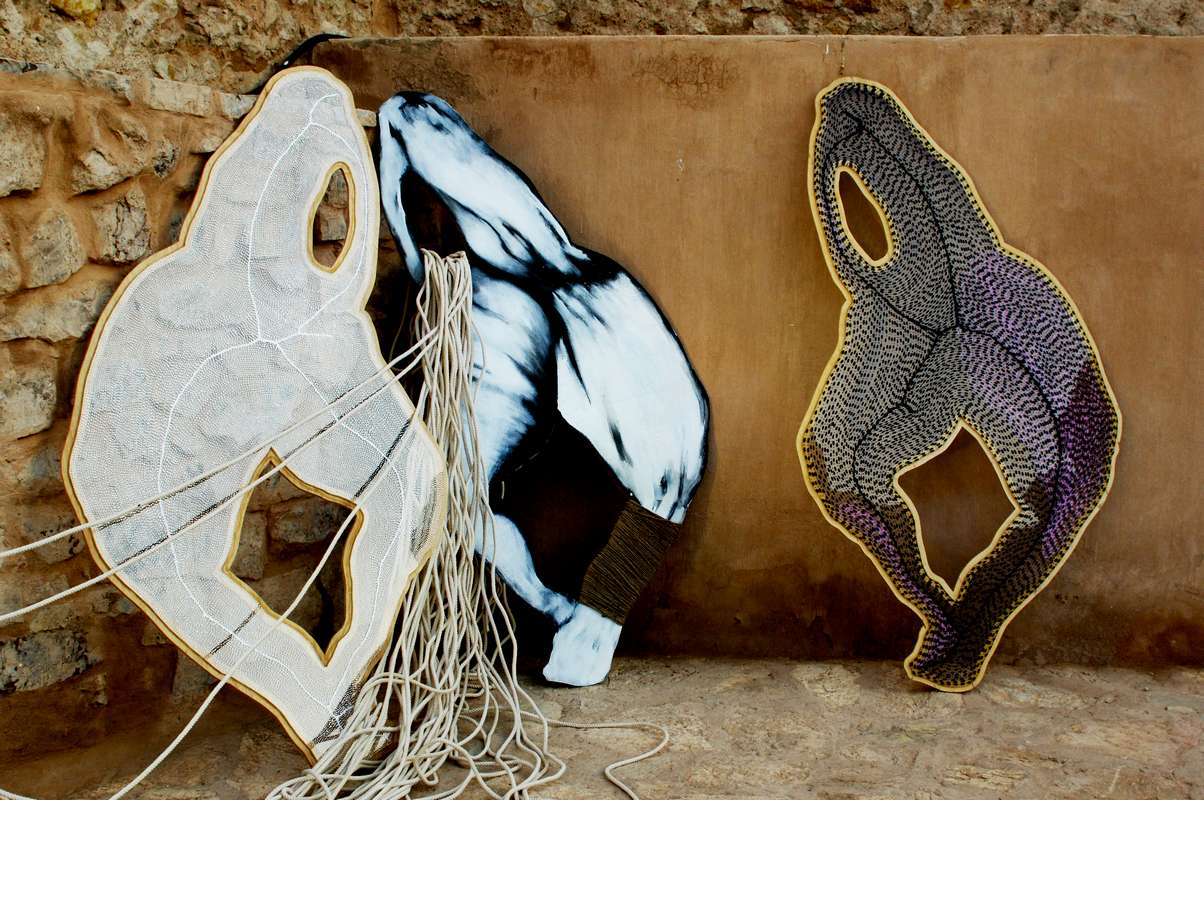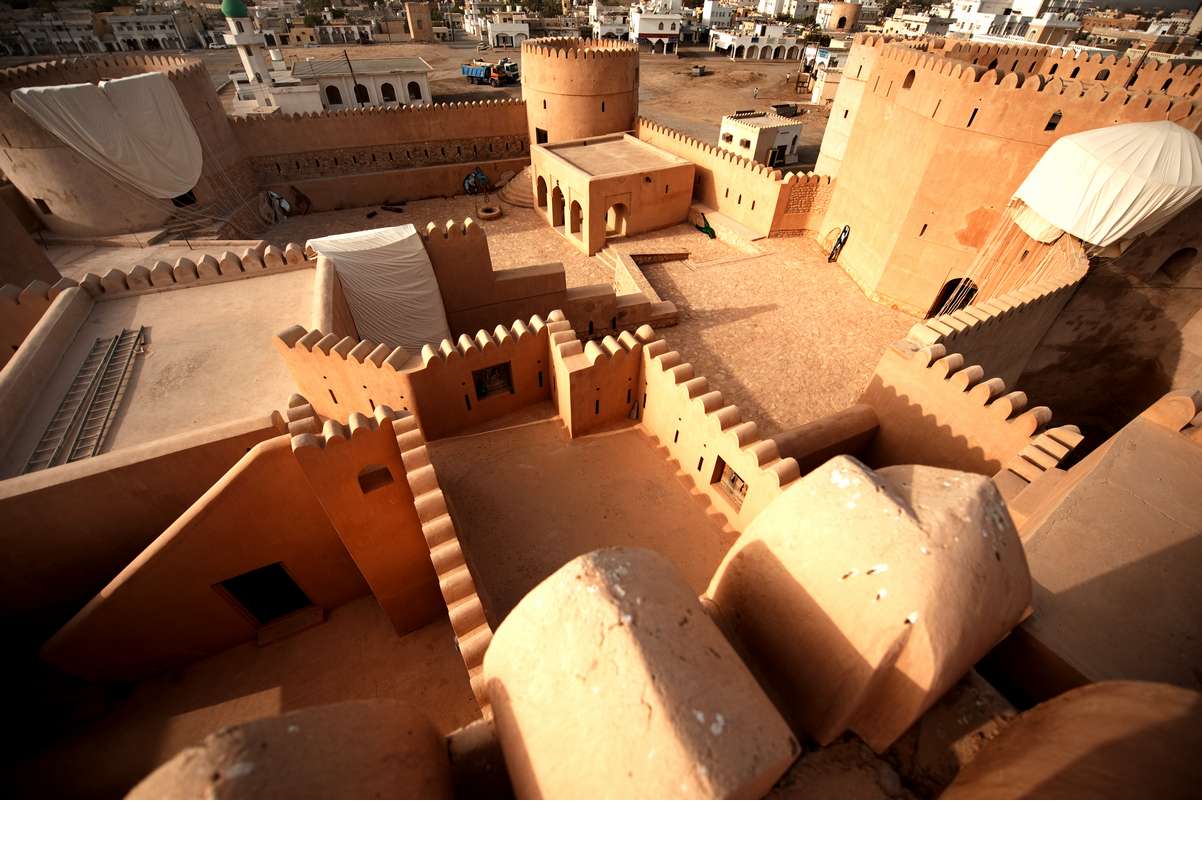Safe Landings, running from 22-28 March 2010, marked my first solo show in Muscat, and my largest project at the time.
Full press release below:
Safe Landings marks Radhika Khimji’s first solo-show in Muscat, Oman and is her largest and most ambitious exhibition to date. Khimji’s work is defined by her ability to describe a body in motion through drawings and installations that incorporate cut-out shapes, which are then positioned in different spaces. These cut-outs or “shifters” (in the artist’s own words) are constantly dislocated from their background supports, and are therefore compelled to renegotiate their existence in new environments. At Barka Fort, the artist adds a second narrative layer by introducing large parachutes, which are attached to these cut-outs. The “shifters” and parachutes together interact with the history of the site as well as the structure of the fort, in order to define an uncertain existence. In setting up this visual and architectural apparatus, Khimji reconsiders the terms “displacement” and “embodiment” anew, and what it means for a work of art to encapsulate both these states of being.
The artist’s site-specific installation draws on the history of Barka to address issues of contemporary cultural identity within a globalized society. Barka was once a strategic trade capital in the late 18th century. In an effort to prevent harassment in Omani waters, the ruling Sultan handed over the use of Muscat’s port to the Persians and moved to the town of Barka. Ultimately, as major trade routes were redirected to pass through Barka, this move enabled the Omanis to regain full control of Muscat. By changing trade routes the Omanis were able to preserve their position with dignity and strength. It was a displacement of a port from one place to another for a short period of time, a hovering between two places. In Khimji’s terms this was an “embodied hover” as the interim period did not disorientate the peoples sense of self.
The “parachute shifters” shed light on what an embodied hover might be. Parachutes are functional objects, fully visible in the sky where they open up completely. The artist is interested in the visibility and openness that occurs in the air, when the parachute is no longer in its pack or strewn on the ground. One must consider Khimji’s “shifters” with this understanding of openness, as fully functional between different definitions and places. Formally they exist in a place between painting, sculpture and drawing. They teeter on a place of near recognition as abstract bodies, performing different gestures- either sitting, standing or leaning. In Safe Landings, unpacking the work begins with these shapes, as bodies caught in a state of flux in the multi levelled courtyard in Barka.





